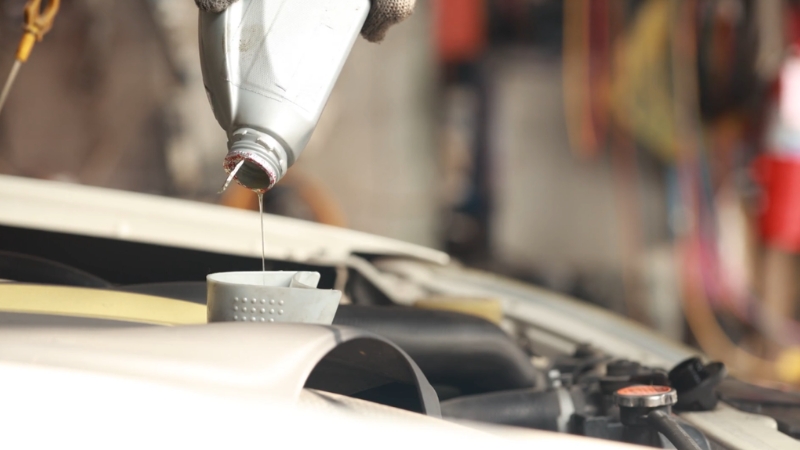
Share Post:
The car market is undergoing dramatic shifts as we approach 2025, with pricing dynamics at the heart of consumer decisions.
Economic pressures, supply chain issues, and shifting preferences have shaped the trends seen in 2024.
Examining these factors and forecasting potential changes for 2025 provides valuable insights for buyers navigating the evolving market.
Table of Contents
ToggleFactors Affecting Car Prices in 2024

First, let us touch on the factors that affect car prices in 2024.
Economic Conditions
High inflation has tightened wallets, making car ownership a more challenging goal for many. Rising interest rates have compounded the issue by increasing the cost of financing.
These economic hurdles have driven many to delay purchases or explore alternative solutions, such as leasing or opting for lower-priced used vehicles.
With affordability becoming a pressing concern, automakers have started adjusting their strategies to maintain sales, including focusing on smaller, less expensive models.
Supply Chain Challenges
Lingering disruptions caused by the pandemic remain a headache for manufacturers. The shortage of semiconductor chips has particularly impacted:
- Vehicle production
- Slowing assembly lines
- Delaying deliveries
Specialty parts essential for advanced features have also been in short supply, leaving many buyers facing long wait times.
Consumer Preferences

Electric vehicles have surged in popularity as environmental awareness grows and government incentives sweeten the deal.
However, the relatively higher cost of EVs has steered many price-conscious buyers toward used cars.
Tight budgets and a cautious approach to spending have defined consumer behavior, forcing manufacturers to rethink pricing and production strategies to align with these priorities.
Naturally, those interested in purchasing EVs should think about obtaining the right type of insurance, like Rollin’ Insurance.
Government Policies
Tax breaks and subsidies for EVs have encouraged buyers to make the switch, but these policies have also driven up demand and prices.
Stricter environmental regulations have increased production costs, impacting pricing for traditional gasoline-powered cars.
Manufacturers are grappling with how to absorb these costs while remaining competitive in the marketplace.
What Could Change in 2025?
Several factors indicate the potential for a more stable car market in 2025.
Economic conditions, supply chain dynamics, the evolving electric vehicle (EV) market, and pricing strategies are poised to bring significant changes that could benefit both manufacturers and consumers.
Economic Stabilization
The global economy may see a turnaround in 2025, with inflation predicted to decelerate, offering much-needed relief to consumers struggling with the rising costs of living.
If interest rates decline, the financial burden of car loan options from lenders could become more varied, lower and more tailored to individual interests of consumers, resulting in these financing options becoming more attractive to a larger audience.
- Slower Inflation: Eases pressure on household budgets and improves affordability.
- Lower Interest Rates: Makes car financing more accessible for consumers.
- Recession Risks: May dampen consumer confidence and delay purchase decisions.
However, there are uncertainties. A possible recession could temper these positive developments. Rising unemployment may erode consumer confidence, leading some potential buyers to delay purchases despite improved financing conditions.
Shift in Supply Dynamics

Manufacturers are expected to achieve greater production efficiency as global supply chains stabilize. The recovery could lead to a drop in raw material and component costs, making vehicle production less expensive.
Enhanced manufacturing capabilities and reduced bottlenecks should result in increased inventory levels, giving buyers more choices and mitigating price spikes caused by shortages.
- Improved Production Efficiency: Manufacturers recover ground lost during previous disruptions.
- Lower Material Costs: Eases financial strain on both producers and buyers.
- Higher Inventory Levels: Reduces scarcity-driven price inflation.
The potential stabilization of supply chains is particularly significant for high-demand components like semiconductor chips.
Their improved availability could restore balance across different vehicle segments, offering consumers a broader range of models without extended wait times.
Evolution of the EV Market

The electric vehicle sector is expected to gain even more momentum in 2025. A wider range of models across various price points will make EVs more accessible to consumers with diverse budgets. Advances in battery technology could drive down production costs, making EVs increasingly competitive with traditional internal combustion engine vehicles.
As EV supply catches up with demand, a potential price correction may occur. Buyers hesitant about high initial costs might find the newer models more appealing. Additionally, expanded charging infrastructure and continued government incentives will support the transition to electric mobility.
- Expanded EV Offerings: More models across different price points enter the market.
- Advancements in Battery Technology: Lower production costs and enhanced affordability.
- Price Correction: Supply and demand balance could reduce EV prices.
Incentives and Pricing Strategies
Automakers are likely to enhance their pricing strategies to attract more buyers. Increased use of consumer incentives, such as rebates, cashback offers, and low-APR financing, will make new vehicles more appealing.
These measures could be coupled with reductions in manufacturing costs, allowing automakers to adjust pricing without sacrificing profitability.
This combination of incentives and production cost efficiency could result in modest price reductions for new cars, potentially by 3-5%.
Consumers looking to upgrade may find 2025 an opportune year to make their move, especially with manufacturers competing for market share in a recovering economy.
- Enhanced Consumer Incentives: Rebates, cashback offers, and financing deals to boost sales.
- Lower Manufacturing Costs: Provides room for price adjustments.
- Modest Price Reductions: New car prices could decrease by 3-5%.
Diverging Trends in New vs. Used Car Markets
Now that we know what can be expected in 2025, it is important to come up with how these changes can come to fruition.
New Car Market
The stabilization of production processes in 2025 is expected to lead to improved inventory levels and broader availability of popular models.
Automakers are likely to introduce more aggressive incentives, such as cash-back offers and attractive lease deals, to drive sales and compete for market share.
However, despite these efforts, the demand for premium models and limited-edition vehicles is likely to keep prices elevated in specific segments.
- Improved Inventory: Increased production efficiency and supply chain stabilization.
- Prevalent Incentives: Cash-back offers, low-APR financing, and competitive lease deals.
- Continued Price Disparity: High demand for premium and limited-edition models maintains elevated prices in those segments.
Used Car Market
As new car availability improves, the used car segment is expected to see some easing in pricing pressures.
The demand for high-quality pre-owned vehicles remains robust as more consumers turn to cost-effective alternatives amidst economic uncertainties.
For those in Texas, accessing quality and trustworthy options may seem challenging. However, avenues like EchoPark that consumers in the region have reliable resources to explore these beneficial choices. Let’s check out how it works in some other states:
California
World Population Review reports that in California, the average price of a used car was $35,759 in 2022, approximately 6.48% above the national average.
This elevated pricing is attributed to high demand and a strong market for electric and hybrid vehicles, which have seen a 20% rise in resale value nationwide.
The state’s push for greener energy sources and stringent emission regulations have further propelled the popularity of these vehicles.
Florida
Florida’s used car market has been influenced by economic uncertainties, leading consumers to seek cost-effective alternatives. The average price of a used car in Florida was $34,519 in 2022, about 2.79% above the national average.
This trend reflects a broader national pattern where the average price of a used car reached $25,571 in 2024, as per Caredge. Year-end new car sales may alleviate demand for used cars, potentially sending prices lower in December.
New York
In New York, the average price of a used car was $33,246 in 2022, slightly below the national average, as per statistics.
The state’s urban population has shown a growing interest in compact electric vehicles (EVs) and hybrids, driven by urbanization and environmental policies.
This shift aligns with national trends where electric and hybrid vehicles have seen a 20% rise in resale value.
Ohio
Ohio’s used car market has been affected by economic factors, with the average price of a used car at $32,267 in 2022, about 3.92% below the national average.
Economic instability has led consumers to be more budget-conscious, increasing reliance on financing options for used cars. This trend has bolstered demand and kept prices high, reflecting a national pattern where the average price of a used car reached $25,571 in 2024.
Georgia
Statistics show that Georgia’s used car market has experienced price increases, with the average price of a used car at $36,016 in 2022, about 7.25% above the national average.
This rise is attributed to limited inventory and heightened consumer interest, mirroring national trends where the average price of a used car in 2025 is projected to be 15% higher than in 2024.
Inflated Prices and Impact
Many buyers who postponed their purchases due to inflated prices in 2024 are likely to reenter the market, increasing demand.
However, the effects of prior production disruptions, such as limited trade-ins and inventory shortages, will continue to influence the market.
- Price Relief: Slight reduction in prices as new car availability improves.
- Reentry of Buyers: Consumers who delayed purchases in 2024 return to the market.
- Lingering Inventory Issues: Past production slowdowns still limit used car availability.
Challenges and Wildcards

And how about challenges?
Uncertain Economic Factors
Geopolitical tensions and fluctuating fuel prices are unpredictable forces that significantly affect production and transportation costs.
Labor strikes or workforce disruptions could add further strain to supply chains, leading to delays and cost increases.
Buyers and manufacturers alike must prepare for these variables, which can shift market dynamics unexpectedly.
- Geopolitical Tensions: Increased risks of economic instability and higher production costs.
- Fuel Price Fluctuations: Direct impact on transportation and manufacturing expenses.
- Labor Strikes: Potential for supply chain disruptions and delayed production schedules.
Regional Variations
Different regions will exhibit varied trends in car pricing and availability.
Areas offering strong government incentives for electric vehicles are likely to see faster adoption rates, while regions without robust infrastructure for EVs may struggle to keep up.
Policies, economic conditions, and consumer behavior at a regional level will heavily influence market performance.
- EV Incentives: Faster adoption in regions with government support.
- Infrastructure Challenges: Slower adoption in areas lacking EV charging infrastructure.
- Policy Impacts: Regional policies driving differences in vehicle pricing and demand.
The Bottom Line
The car market of 2024 has been shaped by economic, supply chain, and consumer-driven factors.
Looking ahead, 2025 promises shifts in pricing, availability, and technology, creating opportunities and challenges for buyers.
Staying informed and timing purchases strategically will be key for navigating these changes effectively.
Related Posts:
- Car Prices in 2025 - Trends, Predictions, and Market…
- How Much Does a Police Car Cost - A Breakdown of…
- Car Registration Fees in 2025 - What You’re Paying…
- Worst Toyota 4Runner Years (And Why You Should Skip…
- Why Does My Car Smell Like Gas? Common Causes and Solutions
- Why Does My Car Squeak When Turning? Common Causes…








